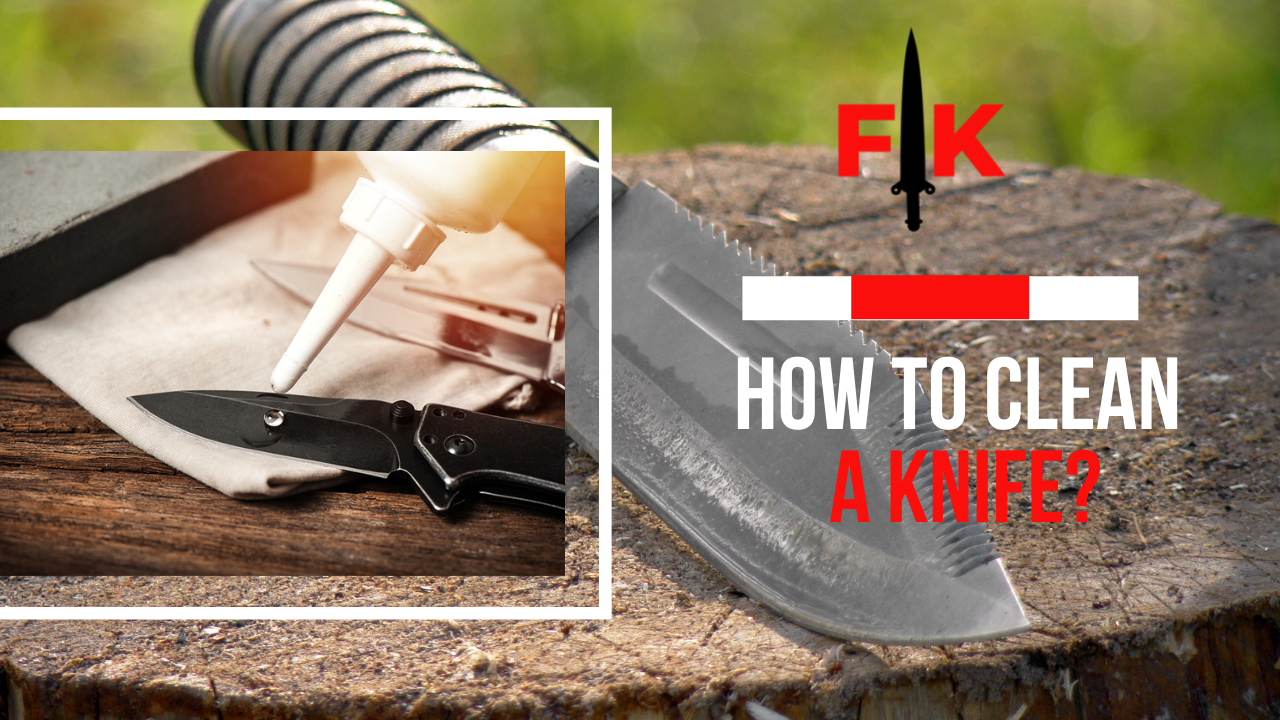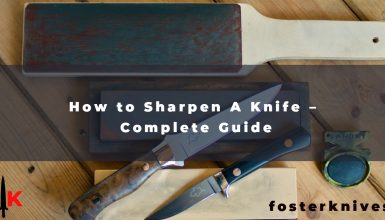Anyone who owns a knife understands how annoying it can be when the knife isn’t clean. Spotted or rusted knives may ruin any knife set and make cutting anything difficult. Let’s be clear: a rusted knife isn’t going to cut anything. As a result, it’s critical to understand what procedures you may take to maintain a good standard of cleaning for your blades.
If you don’t know how to clean a knife, you should learn because unclean or broken blades can be incredibly inconvenient (or at least cause you to spend big money purchasing a new set). Clean your knives properly after every use to keep them sharp and durable for years to come.
This is why it is essential to wash each knife’s blade after each usage carefully. There are various cleaning methods for multiple types of blades. This article will tell you Easy methods for cleaning multiple Knives and Knife blocks like how to clean a Swiss army knife, How to clean rust off a knife, How to clean a wooden knife block, and many more knives, so let’s start the article.
Table of Contents
- How to Clean a Knife?
- How to Clean a Swiss Army Knife?
- How to clean a Wooden Knife Block?
- How to Clean a Pocket Knife?
- How to Clean an Old Pocket Knife?
- How to clean kitchen or Chef Knives?
- How to Remove Rust from Knives?
- How to Clean a Hunting Knife?
- How to Clean Damascus steel Knife?
- How to Clean a Butterfly Knife?
- How to Clean a Knife – FAQs
- Conclusion:
How to Clean a Knife?
The Knife maintenance tip is to take careful care of the blade to protect its cutting edge. It is also important to remember that different cleaning processes are used for different knives. In this guide, we will tell you how to clean different knives.
How to Clean a Swiss Army Knife?
Swiss Army knives are among the best EDC tools you can own. A little upkeep on them will ensure that they work reliably for the rest of their lives.
Cleaning Swiss Army Knife by Using Warm Water:
Fill a large bowl with warm water. The water should be warm enough for you to keep your fingers in it comfortably. Never use boiling water since the metal will expand if exposed to too much heat. Furthermore, boiling water can harm the scales of your Swiss army knife.
Now, remove all of the tools from the knife and immerse it in warm water. Keep it submerged in water for about 30 minutes. Remove the knife from the water and leave the tools open. Clean the frame’s inner layers and the scales on each side. The following materials are required for the operation.
- Cotton swabs
- a small paintbrush
- an old toothbrush
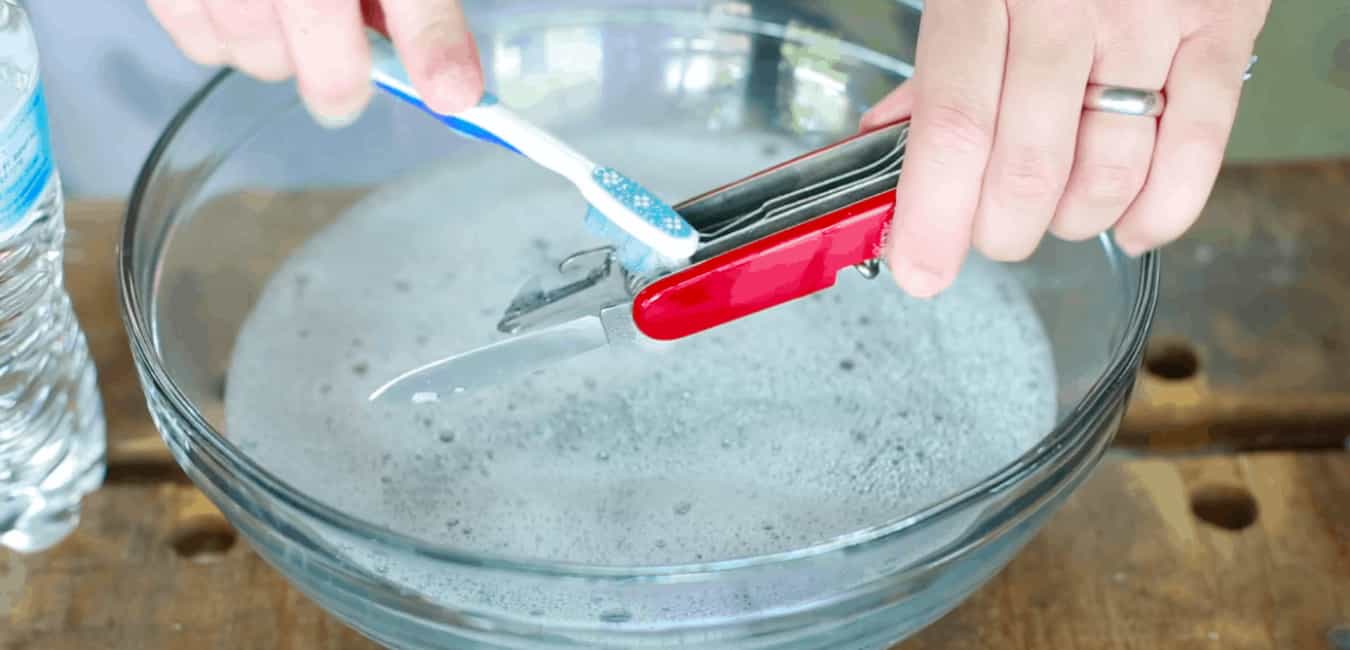
Warm water can loosen the majority of the dirt among the layers. It will be simple to remove the particles that have been left behind. Continue to clean your knife by immersing it in warm water until the layers and scales are completely clean.
Close the Swiss army knife tools after cleaning the interior layers and scales. Open and close the primary blade many times underwater. It will aid in the removal of dirt from the joints. Continue the procedure until the blade moves freely. Repeat this procedure for all of the tools in the knife.
Now, clean all of the equipment inside the scale, including the toothpick and tweezers. Replace them when you’re finished cleaning. Remember that Swiss army knives are not dishwasher safe; you can find here dishwasher safe knives here.
How to clean a Wooden Knife Block?
A wooden knife block allows you to properly organize your knives, saving you bench space and adding class to your kitchen counter.
However, bacteria and mold will sprout within the knife slots if you do not properly clean and dry your blades before keeping them in your wooden knife block. If your tabletop becomes damp, you may be in for a bad surprise when raising your knife block.
It is recommended that you clean your wooden knife block once a month by following the methods below.
You can also watch this video for cleaning a wooden knife block.
Take out all of your knives: This may seem apparent, but to clean that knife block, you’ll need to remove all of your knives.
Clear out the slots: Pick up your block, turn it over, and shake any crumbs out. Turn it right-side up and use a pipe cleaner to get inside the slots if you think there are any leftover crumbs.
Soapy water should be used to clean the outside of the block: Scrub the outside of the block gently using a scrubby sponge or brush, soap, and water. Use as little water as possible! Moisture is what causes mold to grow in the first place.
Wipe down the block with a clean, damp cloth: After you’ve given it a good scrub and removed any errant crud, wipe it down with a clean, damp cloth.
Remove extra moisture and soapy residue with a scraper: To ensure that you’ve removed all of the water and soap, take a scraper and run it along all of the edges of the block. Then, wipe down the block again with a clean, dry cloth.
Allow the block to dry completely: You’ll still want to let it air dry for a while. Do the first step at night, and you’ll be ready for the bleach in the morning.
Using bleach, clean the outside of the butcher block: With a teaspoon of bleach and four glasses of water, make a diluted bleach solution. Clean the outside of the butcher block using a scrub brush and bleach solution.
To clean the slots, use a pipe cleaner: Now, clean inside the slots with the bleach solution and a pipe cleaner (or bottle brush).
Again Wipe down the block with a clean, damp cloth: Once you’re satisfied that the block is clean, wipe it down with a clean, dry towel to ensure it’s as dry as possible.
Allow the block to dry completely: Allow your knife block to sit for another 12 hours (or more) to dry properly.
Place your knives back in: You’re back in action now. Place your clean, dry knives back in.
If your knife block is moldy and the following techniques do not remove the mold, you may need to sand the surface of the block using sandpaper.
How to Clean a Pocket Knife?
Pocket knives inevitably accumulate small particles of crud on the blade and in the pivot due to use and storage in a pocket or elsewhere. This can prevent the knife from properly opening, closing, or locking, resulting in a potentially deadly instrument. Wiping down a knife after each use is ideal for keeping it clean, but periodic cleanings can suffice for the less conscientious.
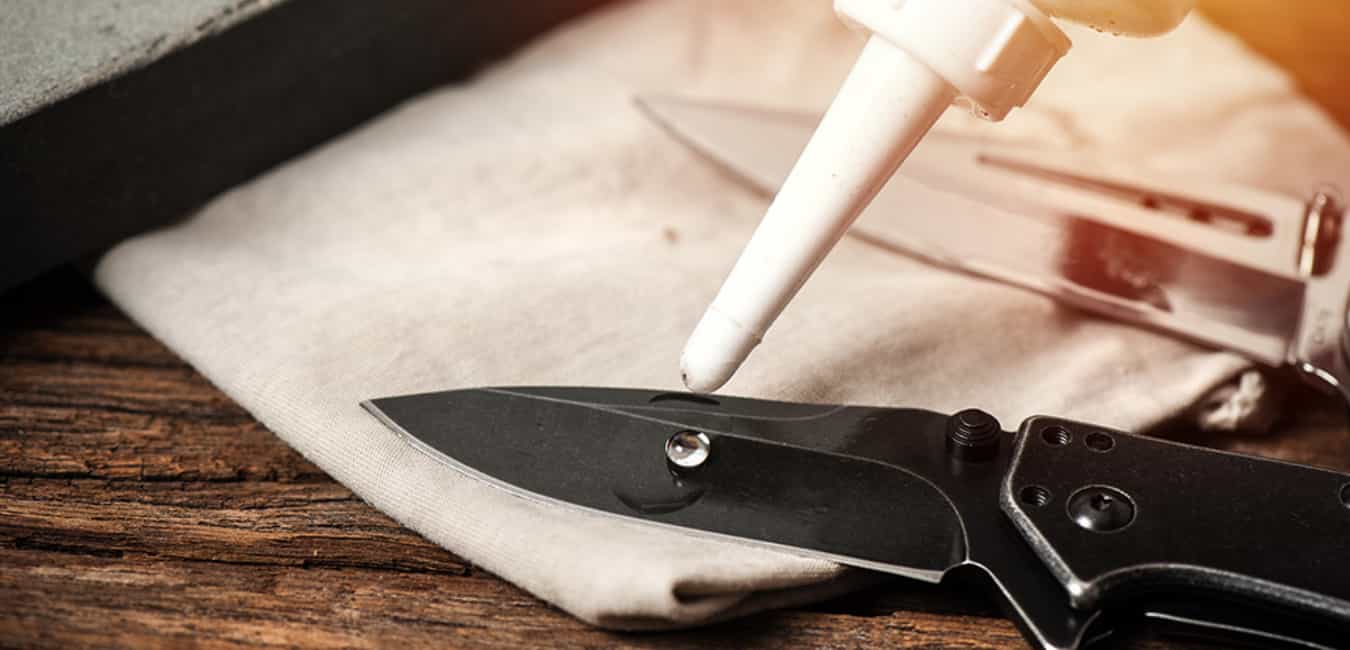
Below there is a step-by-step tutorial on Pocket knife cleaning.
- Remove Dirt: Begin by cleaning out any visible dirt or other debris from the knife’s nooks and crannies, giving special care to the pivot and handle. Toothpicks are particularly useful for this purpose.
- Wash the knife: To properly clean the knife, use warm water and mild dish soap. You can immerse your knife, but make sure it completely dries before lubricating and storing it again. Once moist, use residual bits and clean dirt away with a toothpick, Q-tip, and toothbrush.
- Dry the Knife: Use a rag or, better yet, compressed air (like the kind used to clean keyboards) to dry the knife. Allow it to air dry completely before lubricating and storing.
How to Clean an Old Pocket Knife?
An old Pocket knife is affected by rust. While it may be tempting to believe that rusted blades are safe to use, they can be exceedingly dangerous if you do not know how to clean them properly. If you’re learning how to clean a rusty knife for the first time, it’s a good idea to start with the steps listed below.
Restore an Old Pocket Knife Cleaning- Process
To begin the process of cleaning a rustic knife, it is critical to determine whether or not the blade has been affected by rust.
Wipe them with a dry cotton cloth to remove rust from carbon steel blades. If the Knife is constructed of stainless steel Blade (also known as an alloy blade), wipe the surface with a mild soap.
Dab the rust with alcohol to eliminate discolorations and other types of stains. If you don’t wash thoroughly, the stain will leach back into the metal, degrading it and reducing the blade’s strength.
If the blade has been affected by rust, scrape or rub the affected region with a knife to remove as much rust as possible. To make the scraping process more effective, use coarse or tough stones.
Remove all indications of rust, but be careful not to remove the natural rust area. Instead, dab at the rust with a damp rag until it is swiftly eliminated. If this does not completely remove the stain, use more detergent to verify that the stain is completely removed before proceeding to the next stage. Rinse the area well to remove any lingering rust stain residue.
How to clean kitchen or Chef Knives?
As the kitchen’s workhorse, it is very important that you keep the Best kitchen Knife set and Best Chef Knives.
After use, it is necessary to thoroughly clean your kitchen and chef’s knives and any other utility cutting blades in your kitchen. To care for your stainless steel, carbon steel, or ceramic knives, follow these steps:
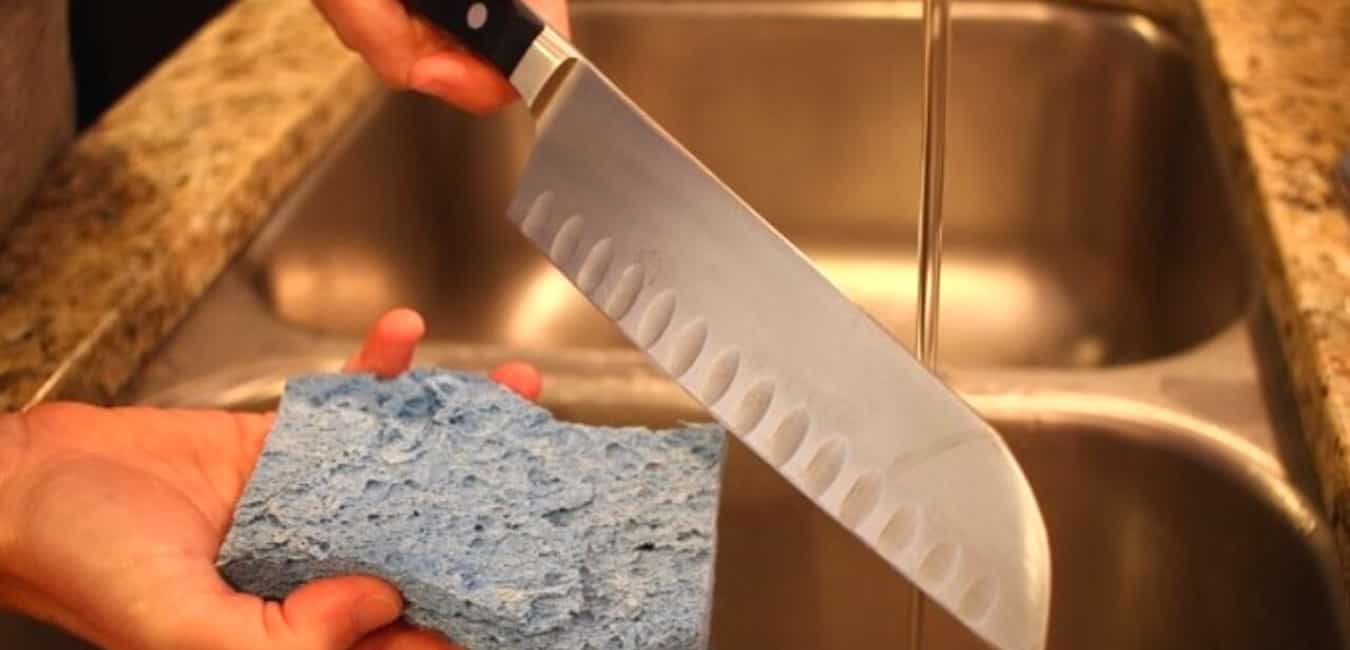
Grip: Hold the knife’s handle with one hand in a pinch grip using your index finger and thumb.
Scrape: Using your other hand, gently scrub away any food particles and filth on the knife blade using a sponge soaked in dish soap and warm water. To avoid cutting yourself, clean from the blade’s spine to the edge. You can scrub one side of the blade at a time by laying the knife on the countertop, or you can hold the knife against the sink for extra protection while cleaning.
Soak: Allow the knife to soak in warm, soapy water for a few minutes before cleaning again if there are any persistent, stuck-on stains. To clear debris, use an old toothbrush or a cotton swab.
Rinse: Rinse the knife under running water with soap.
Dry: To avoid oxidation, thoroughly dry the blade with a clean cloth or paper towel before storing the knife. The edge may get dull and rusty as a result of air drying.
Oil: After wiping a carbon steel kitchen knife clean, coat it with mineral oil to prevent corrosion.
How to Remove Rust from Knives?
Baking soda can be used to remove rust: To remove rust from a knife, make a baking soda paste with baking soda and water. Cover the blade in the paste and set it aside for an hour. Remove the paste by scrubbing. You can also immerse the rusted knife for five minutes in white vinegar.
How to Clean a Hunting Knife?
A hunting knife can get a little messy. It can suffer from severe wear and tear if not properly maintained. Knowing how to clean a hunting knife properly means that you will get more life out of your blade and that using it will be a much more pleasurable experience. I want to present you with two approaches to cleaning a Hunting Knife. They are both very simple to make and require very little preparation.
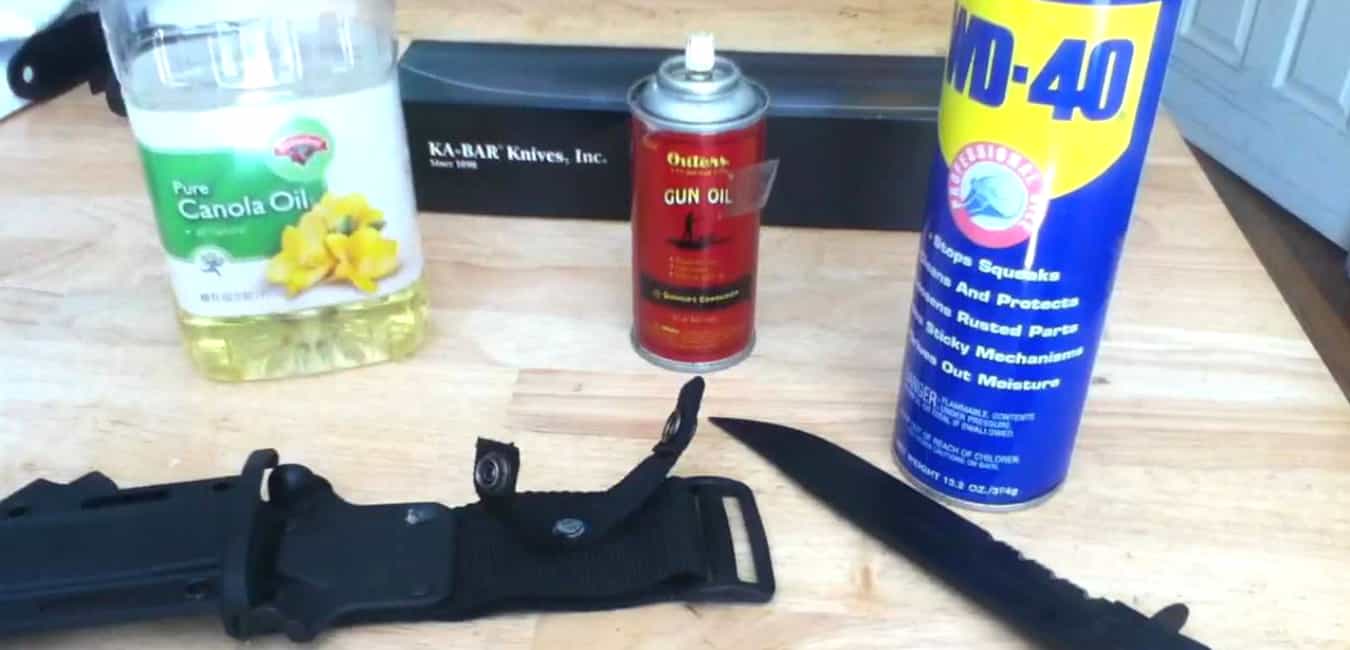
Method 1: Using Rotor Oil to Clean a Hunting Knife:
- Begin by applying rotor oil to the blade from the top of the handle to the blade’s tip.
- Rinse the oil away with water.
- Apply the rotor oil to the same region again, this time from the top of the handle to the blade’s tip.
- Rinse the blade with water a second time.
- The edge should now be free of debris, residue, and excess rotor oil.
Method 2: How to Clean a Hunting Knife Using Baking Soda:
- In a mixing bowl, combine equal parts water and baking soda (about a tablespoon each).
- Apply this mixture to the knife’s blade and wash it off, scraping lightly while taking care not to injure yourself.
- After that, run the blade through a soft cloth, preferably a microfiber cloth. This will get rid of any residual mixture as well as any stains.
- If any stains persist, make a solution of equal parts salt and vinegar.
- Wash the blade in the salt and vinegar solution for a few minutes before wiping it clean with a cloth.
- While doing that, you must be sure that you do not directly handle the blade. You must use the rag to remove the mixture, stains, and any other remnants that may have formed.
- Let the knife dry after that.
How to Clean Damascus steel Knife?
Knowing how to keep your Damascus Chef knife clean is essential if you want to keep it for a long time. Here are steps to clean your Damascus steel Knife.
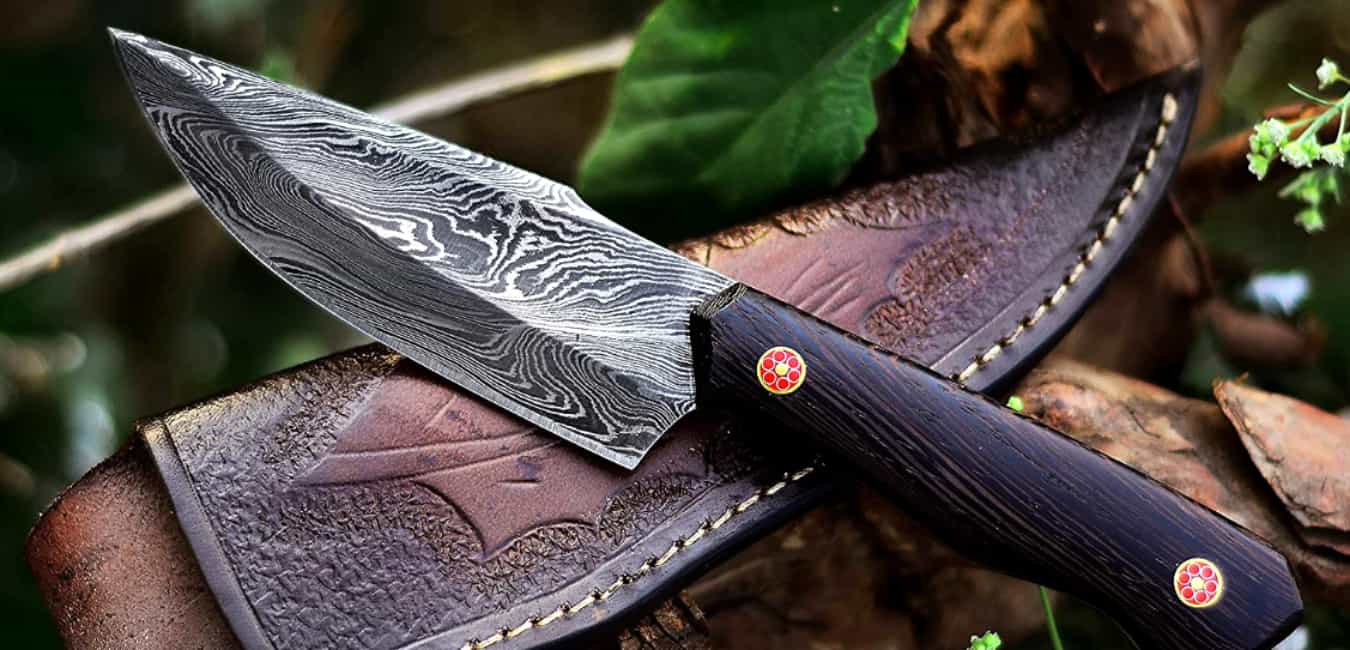
Wash and Rinse:
After each usage, clean the knife with a soapy dish sponge. Abrasive cleaning products, such as steel wool or rough cloths, should be avoided. The abrasive cleaning material will remove the etched oxidation on the knife. Rinse completely with running water and dry with a clean cloth or soft towel.
Use oil:
Because the Damascus knife is steel, we do not advocate using olive oil or any other rancid oil. Mineral oil can be used to protect the knife against moisture, which can cause rust and discoloration. Mineral oil used on Damascus steel will not only offer a beautiful shine. It will also serve to justify its lovely, natural pattern.
Polishing:
After using the mineral oil, polish the Damascus steel with a polishing cloth. We recommend that you polish the blade regularly, especially if you use it frequently. This technique will improve the appearance of the steel.
How to Clean a Butterfly Knife?
If you want to make, your Butterfly Knives look new again. Below is a quick and easy step-by-step guide to cleaning your Balisong!
You can also watch this video to understand better how to clean a Butterfly Knife.
Remove the Balisong:
Using your Torx screwdriver bit and carefully loosen your Balisong pivot screws. Remove any body screws or Zen Pin screws and set them aside gently.
Use some kitchen paper or a microfibre cloth to clean out the screw threads and remove any old thread locks or filth, taking caution not to lose the screws.
Separate the Components:
Take your blade, washers, and handles and set them aside (along with any additional pivot hardware, such as bushings or bearings).
Using Q-Tips or Kitchen Paper, remove any muck or dirt from the pivot holes of the blade and around the holes. Carefully clean out the bushings and washers, taking care not to lose them.
After that, clean the handles carefully with Q-Tips for channel Balisongs and Kitchen Paper for sandwich Balisongs.
Reinstate it together:
Put the pivots in place after carefully aligning the washers and bushings in the Balisong. After that, reassemble your Balisong and fine-tune it to your desire before allowing the thread locker to dry.
Aftercare:
This is the stage at which you should oil and lubricate your blade. Oiling the blade prevents rust and restores the blade’s sheen. Lubricating your Balisong is essential since it decreases wear and tears while using your Balisong on a regular basis.
How to Clean a Knife – FAQs
Conclusion:
By reading this article, I hope you can clean any knife from mentioned knives in the article by yourself. Now that you have a sparkling blade! And if it gets dirty, clean it off again!

